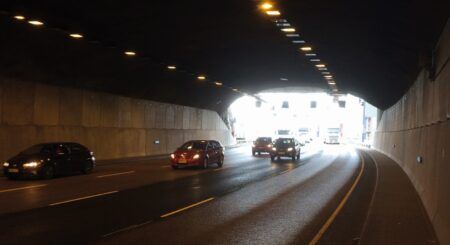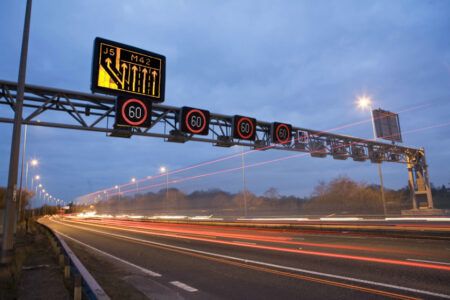Knowing which is the quickest lane to travel in on a freeway is a major concern for drivers, with their choice generally down to guesswork based on their immediate environment check Lane selection will become increasingly important with the advent of autonomous vehicles, particularly as about 4% of highway crashes result from lane changes. New patented technology may solve these issues.
ALMAGuide has announced that it has received approval for two US Patents that describe technology it has developed for the advanced lane guidance of cars and trucks on freeways. The company’s ALMA (Advanced Lane Management Assist) technology takes information from centralized traffic management control centers, conditions the data, and uses proprietary algorithms and propriety data structures to tell the vehicle, either with driver or driverless, both: the best lane to be in on the highway, based on traffic flow several miles ahead of the vehicle; and the most appropriate speed for the vehicle. ALMA also applies and adapts the lane guidance technology for trucks.
ALMA is a major improvement over what drivers currently do, or what driverless cars are moving toward in the near future, because lane changes performed without using advanced lane management techniques are tactical rather than strategic, being based on the immediate environment, as compared with the prospective environment over which they will soon be traveling. As a result, many lane changes on highways are unnecessary; they are done under the misperception that the other lane is moving faster. Studies have shown that this is often not the case, which the driver learns after the unnecessary lane change is made. Unnecessary lane changes result in additional accidents and needless driver stress. Unless driverless technologies are coupled with strategic lane choices based on what is happening in each lane several miles ahead of the vehicle on the highway, they do not change the sub-optimal decision-making framework for making lane changes.
ALMA contains three major components:
ALMA Management Center (ALMAMC), which obtains lane-based traffic data from traffic management centers (TMCs) or other sources. It conditions this data and develops parameters and other information in a reference frame that is specifically formulated to address lane selection requirements. This information will be used by the vehicle application software;
Guidance Assist Vehicle Module (GAVM), which uses ALMAMC data and accepts information from the vehicle operator expressing their driving preferences and other information. It also accepts information from the vehicle regarding position, speed, and destination. It provides lane choice and target speed recommendations using cellular-based technology or other communication techniques;
ALMA Truck Vehicle Module (ALMATR), as trucks require a different set of algorithms for optimal lane choice and target speed selection. Lane changes for trucks on freeways should be limited to situations that can provide a minimum threshold of time savings. Using this information, as well as information supplied by the truck and truck operator, ALMATR provides the recommended lane and target speed for the truck.
Developed by Robert L Gordon, more detailed descriptions of the technology, patents and supporting information can be found here: www.almaguidellc.com




